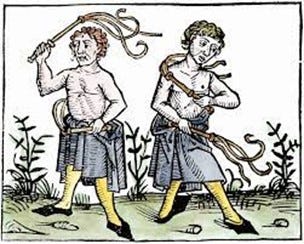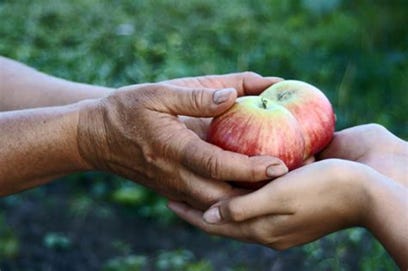From Ancient Rituals to Social Media; The Emergence of Self-harm Cultures
Essay Series #2 - Dr Vaishnavi Sornarajah
Edited by Dr Gurjot Brar & Prof. Henry O’Connell
Vaishi’s essay offers us some much needed evolutionary and cultural insights into current self-harm practices. Tying together the literature and her experience of working with children and adolescents as a psychiatry trainee, Vaishi explores this important topic through Tinbergen’s four questions.

A night shift in a Child and Adolescent Mental Health (CAMH) Unit, a peruse through social media and the tragic case of Molly Russell. These are aspects of self-harming behaviours that I witnessed whilst working with children and young people. Admissions to hospitals in England for intentional self-harm has more than trebled in 13-17-year-olds from 1,181 in 2007 to 4,075 in 2018 to (NHS Digital, 2019). Much of the discourse surrounding the increased levels of suicide and self-harm lay the blame at the feet of the internet. Whilst social media companies may choose to moderate harmful content, there is a lack of discussion on why such content exists or why it proves to be so popular.
During my time as a Psychiatric Trainee, I noticed that whilst most self-harming was private, at times behaviours would spread quickly throughout a ward. Why was this the case? I hypothesise that self-harming in adolescents can occur within social groups and creating a subculture with its own prescribed socially stipulated behaviours i.e., rituals. This subculture develops as a coping mechanism to foster peer relations in times of stress.
During my time as a Psychiatric Trainee, I noticed that whilst most self-harming was private, at times behaviours would spread quickly throughout a ward. Why was this the case?
In this essay I will examine this hypothesis through the lens of Tinbergen’s four questions which provide a framework for examining traits (Nesse, 2018). The questions are as follows;
1. Ontogeny: How does self-harming develop in individuals?
2. Mechanism; How does self-harming spread within a group?
3. Phylogeny; What is the history of self-harming within groups?
4. Adaptive significance; How has the trait influenced fitness?
Ontogeny: How does self-harming develop in individuals?
Individuals with self-harming behaviours have often suffered from traumatic life experiences in childhood, such as exposure to violence and sexual abuse. This, coupled with poor parental attachments and a lack of knowledge on how to recognise, verbalise and manage emotions leads to intense feelings of distress and maladaptive coping strategies such as self-harming (Gunderson JG, 2018). It is thought that adverse early life experiences can impact gene expression and subsequent development of brain structures such as the amygdala, prefrontal cortex, limbic system, and insula (Gunderson JG, 2018).
Alterations in these brain circuits could lead to increased impulsivity, high pain thresholds and emotional dysregulation that underlies self-harming (Huang X, 2020). These actions serve the function of converting mental pain into physical pain and act as a way to communicate severe emotional pain (Nock, 2008). How do these behaviours develop in individuals given that self-harm is a brutal attack against their own body which causes pain and can negatively impact their lives?
Nock (2008) suggests that self-harming behaviours undergo both positive and negative reinforcement during early life. During childhood, individuals learn how to communicate emotions using language. However, if language fails to evoke a desired response from caregivers, such as in the context of neglect, the child escalates communication from verbal to physical until the goal is achieved.
Figure 1 illustrates how this repeated process of ignored distress could escalate to self-harming behaviours (Nock, 2008).

If cutting elicits care when previous verbal responses did not, the individual is positively reinforced to engage in cutting when in distress. There is also a possibility that self-harm releases endogenous opioids which rewards such behaviours (Wise RA, 2014). Negative reinforcement would occur in the context of the removal of an aversive stimulus, such as utilising cutting to stop unwanted emotions (Nock, 2008). Repeated reinforcement can result in a “behavioural addiction” forming repeated self-injury as the default method to manage challenging emotions and communication (Blasco-Fontecilla H, 2016).
If cutting elicits care when previous verbal responses did not, the individual is positively reinforced to engage in cutting when in distress.
Outside of the familial unit, self-harming and its effects can be witnessed by peers leading to the spread and imitation of such behaviours.
Mechanism; How Self-harm Spreads in Social Situations
Being a teenager is a daunting and isolating experience even in the context of a secure upbringing. In order to begin and maintain friendships, individuals are likely to conform to the group. Pro-social behaviours are reinforced with positive responses such as affirmation and intimacy with a consequent increase in status (Juvonen, 2008). I hypothesise self-harming can in certain contexts meet the criteria of a pro-social-behaviour in that it differentiates an individual from their parents by violating current social norms and fosters peer inclusion by creating a group identity.
For those with poor attachment, like many of the children attending CAMHS, the onset of puberty often fosters an intense need for close interpersonal relationships with peers (Nicole Heilbron, 2008). If intimacy with others can be predicated on engagement in self-harming behaviours it is not surprising that such behaviours spread very quickly. Self-harming behaviours especially those that leave scars could also allow for a non-verbal display of status and an increase in social currency (Nock, 2008). There is a strong desire therefore to adopt the behaviour of high-status individuals, despite the physical cost of self-harming.
The social spread of behaviours is further hastened by the empathic nature of adolescents who have emerging Borderline Personality Disorder (BPD) traits. Individuals with BPD may exhibit great degrees of empathy, scoring higher on self-reported scores of distress than controls when exposed to the negative emotions of others (Kılıç, et al., 2020). Those with BPD have difficultly differentiating between their own emotions and those of others (Gunderson JG, 2018). Another characteristic of BPD is hypersensitivity to rejection, where due to poor early life attachment, individuals are understandably afraid that they will lose connections with others and will go to great lengths to maintain them.

The social milieu of a CAMHS unit which is filled with highly empathic yet isolated individuals with poor attachments and difficulty regulating emotions is therefore potentially ripe for the formation of a group identity based on self-harm.
How self-harm spreads on social media
Outside the setting of a CAMHS Unit, the internet has been able to create spaces where self-harm is normalised. This landscape is further complicated by the advent of social media that allows the dissemination of images and methods of self-harm through user generated content. Whilst many platforms do direct online users to suicide prevention services, users are also directed to more self-harm content. When I explored these sites, I observed content that was often humorous and creative but often interspersed with self-harm images and tips on how to evade care services and parental oversight. Posts often utilized language which was intentionally vague yet filled with double meanings which were only accessible to those who understood the code, for example the use of the pill emoji. Unique imagery and video styles are shared by self-harm communities online resulting in the development of a sub-culture with its own methods of communication and conventions.
The social milieu of a CAMHS unit, which is filled with highly empathic yet isolated individuals with poor attachments and difficulty regulating emotions is therefore potentially ripe for the formation of a group identity based on self-harm.

Self-Harming in Cultures across the World
In order to understand the growth of self-harming subcultures in modern times we need to examine the history of self-harming and its spread across cultures.
With regards to humans, ritual acts against the self is a distinguishing feature of many cultures in the world and persists throughout history. The acts could include self-immolation, piercing and flagellation which aim to cement identity and communicate the ideology of the group to those who are external to the group. I will explore some examples across the world to illustrate the commonality of these rituals.
East Asia
Fire has spiritual significance in many cultures and religions. The Lotus Sutra, a seminal Mahayana Buddhist Text describes how the Bodhisattva Bhaisajyaraja swallowed a flammable liquid and set fire to himself as an offering to the Buddha. This act reflects individual willingness to abandon their body and transcend to a different plane of existence. Ritual burning of limbs and head has been part of the Buddhist Monk ordination practices in Eastern China since the 4th Century. Self-immolation is also a feature of practices from this period and seemed to have been a response to religious persecution. A notable example of suicide by self-immolation is the death of Thích Quảng Đức, a Mahayana Buddhist priest who burned himself alive on the 10th of June 1963, to protest against the persecution of Buddhists by the South Vietnamese government (Michael Jerryson (ed.), 2013).
Europe
Among Flagellants, a subsect of Catholicism which arose during the early 14th century, the belief in the suffering of Christ compelled members to self-flagellate as an act of penance. This act involved the use of the whip against the skin of their back causing physical pain, blood letting and scarring. These acts coincided with the period of the Black Death and were a lamentation of the pain that Jesus endured during his crucifixion. (Michael Jerryson (ed.), 2013). The Black Death was a period of social upheaval and suffering which likely contributed to the emergence of this ritual.

Middle East
The death of Husayn, the grandson of the Prophet Muhammad (PBUH) is marked in some Shi’a communities through lamentations and rituals such as the beating of chests and self-flagellation. Flagellation symbolically represents the blood loss suffered by Husayn and his family. His death marked the separation of differing strands of Islam and the sectarian conflicts that remain to this day. The act of self-harm in this context further binds the group and mobilizes sentiment against an opposing side (Michael Jerryson (ed.), 2013).
South Asia
The ceremony of Thaipusam originated in Tamil Nadu in India and spread across the world and is practiced in various countries including Canada and Singapore. This festival in honour of the Hindu god Murugan, involves devotees carrying a Kavadi (Ward, 1984). The Kavadi, a semi-circular platform weighing several kilograms is attached to the body using multiple metal hooks and skewers which pierce into the skin. Devotees often report entering a trance like state which limits the pain they experience. The procession involves thousands of people and lasts several hours. The altered states of consciousness during the carrying of Kavadi is followed by a decrease in stress and increase in prosocial behaviours such as charity giving (Lee EM, 2016).

The rituals described above which involve self-harming behaviours are not primarily a representation of suicidal ideations. They are instead a mechanism of group expression of emotions such as piety or an act of protest through the body. Violence against the self is both used as a mechanism to form and maintain groups in the face of resistance and persecution as well as to unlock transcendent experiences during periods of suffering.
Adaptive significance of Ritualised self-harm
Those undergoing the rituals described above endure great physical pain that should result in a fitness cost, so why are these rituals so common? That they have developed over a wide and diverse set of populations and a long period of time suggests that there is a common mechanism to explain its recurrence. It is possible that they improve reproductive fitness of the group at the cost of the individual.
Those undergoing the rituals described above endure great physical pain that should result in a fitness cost, so why are these rituals so common?
It seems the intense feelings elicited within a group context cement an individual to a group identity. This especially occurs in the context of severe traumatic events that could affect the population, such as climate stressors, discrimination, or poverty. Stronger interpersonal relationships are protective against external threats and allows the continuation of the group. Xygalatas et al (2013) examined attitudes towards others following involvement in Thaipusam in Mauritius. They compared amount of money donated to the temple between those who carried Kavadi and those who participated in the ceremonies but did not carry Kavadi. Each of the 86 participants of the study were given 200 rupees which they had the opportunity to donate to the temple behind a closed booth. Those who carried Kavadi donated an average of 132 rupees whilst non-carriers donated 80 rupees. This suggests that extreme rituals increase prosocial behaviours such as generosity (Xygalatas, 2013). Prosocial behaviours would likely be and adaptive advantage during periods of adversity as generosity is fostered rather than competition over minimal resources. This is advantageous as it increases chances that the greatest number of the group survive and reproduce.

These prosocial behaviours are further enhanced by the use of rituals to clearly delineate those who are members of a group from outsiders. Despite rituals costing time, effort and resources, they are utilised to facilitate group cohesion especially between non-kin (Legare CH, 2020). Those who engage in the rituals of the group and are considered a part of the “in” group are perceived much more positively than those outside of the group (Molenberghs P, 2013).
Despite rituals costing time, effort and resources, they are utilised to facilitate group cohesion especially between non-kin
Navigating group living and its numerous social complexities is necessary for an individual’s survival as well as the group. For example, both the act of giving birth and hunting are much more successful when individuals are supported by others, thus enhancing reproductive fitness. Ostracism from the group risks an individual’s physical safety and reproductive success (Plavcan, 2012).
It is conceivable that during periods of great adversity such as famine or persecution, individuals would use self-harm as a coping strategy. Overtime these behaviours would spread throughout a group of peers with self-harming becoming ritualised to gel the group together against external forces. These groups with greater cohesion likely had greater reproductive success.
Unlike the self-harm rituals of the past where groups consisted of a particular ethnic or religious identity comprising whole families, current self-harm groups contain adolescents and are associated with suicide. They are therefore unmoored from the family unit and are only able to seek solace and understanding from their peer groups. The lack of cultural constraints can potentially lead to an escalation from self-harm to suicide (Carroll R, 2018).
Conclusion
Self-harming behaviours have been observed across species, time and cultures. While psychiatry textbooks exclusively focus on the individual and familial causes of self-harm, the possible social, cultural and evolutionary aspects have been hitherto neglected.
Those who engage in self-harming behaviour are lonely, isolated individuals who use desperate means to forge and maintain social connections. The rise of self-harming behaviours in the 21st century is likely due to increased anxieties and a lack of belonging amongst many teenagers; feelings exacerbated by the recent pandemic. There is clearly a deep sense of pain in the modern adolescent experience that has resulted in use of self-harm as a coping mechanism and the creation of a self-harm subculture.
Although the internet as a vehicle for spreading self-harming behaviours is new, the usage of these rituals to form groups is ancient. Violence against the body is used for self- expression and to foster cohesion and manage emotions in groups that have undergone immense suffering. In the past these rituals improved the reproductive success of the group but now they have become maladaptive, potentially leading to suicide.
Understanding these behaviours in a modern context could help to generate new ways to tackle this dangerous sub-culture. Tackling online self-harm communities which normalise these behaviours is important. However, tweaking algorithms is not enough. What is needed are alternative avenues for self-expression and encouraging others ways to develop positive peer relationships and ultimately save lives.

If you enjoyed this article and would like to discover more about Evolutionary Psychiatry please consider:
subscribing to our Substack to receive regular content updates
visiting the webpage of the Evolution and Psychiatry Special Interest Group within the College of Psychiatrists of Ireland
visiting the webpage of the Evolutionary Psychiatry Special Interest Group within the Royal College of Psychiatrists
exploring a Youtube playlist on curated presentations by the Evolution and Psychiatry Special Interest Group within the College of Psychiatrists of Ireland
exploring the Youtube page of the Evolutionary Psychiatry Special Interest Group within the Royal College of Psychiatrists
exploring the Evolving Psychiatry podcast



